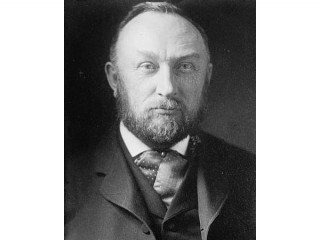
Edward Charles Pickering biography
Date of birth : 1846-07-19
Date of death : 1919-02-03
Birthplace : Boston, Massachusetts, United States
Nationality : American
Category : Science and Technology
Last modified : 2011-03-15
Credited as : Astronomer and physicist, stellar spectroscopy and photometry,
The American astronomer Edward Charles Pickering was a pioneer in the fields of stellar spectroscopy and photometry.
Edward Pickering was born on July 19, 1846, in Boston, Mass., of a distinguished New England family. After studying at Boston Latin School, he attended Lawrence Scientific School, graduating summa cum laude in 1865. He taught mathematics at that institution for a year and then moved to Massachusetts Institute of Technology, becoming Thayer professor of physics in 1868. He married Elizabeth Wardsworth Sparks in 1874.
In 1876 Pickering accepted the directorship of the Harvard Observatory, an appointment that both surprised and angered many, for he had no experience as an observational astronomer. The choice of a physicist, however, placed Harvard in the leadership of the trend, growing since the midcentury, toward a "new astronomy" which used the methods of the physicist to seek a knowledge of stellar structure and its evolution. The day of the observer, who noted the positions of heavenly bodies, was virtually over, and Pickering's appointment to such an important post may well have symbolized the victory of the new astronomy over the old.
The most important achievement of Pickering's directorate was in stellar photometry, a field barely explored with large instruments at the time. When he began the work, even the magnitudes of the stars were not fixed on any generally accepted scale. Pickering established a widely accepted scale and employed instruments, at least one—the meridian photometer—of his own invention, to achieve unprecedented accuracy in determining the magnitudes of 80, 000 stars.
Pickering's second work, begun in 1885, was the compilation of a "photographic library, " as he called it, giving a complete photographic chart of the stellar universe down to the eleventh magnitude on some 300, 000 glass plates. From such plates the past record of the stars may be studied; Pickering, for example, was able to plot the path of Eros in the sky from photographs taken 4 years before this asteroid was discovered.
Pickering was also a leader in stellar spectroscopy, laying the foundation for the method of spectral classification now universally accepted and obtaining the material for the Draper Catalogue, containing 200, 000 stars. He twice received the Gold Medal of the Royal Astronomical Society, was a member of the National Academy of Sciences, and was a founder in 1898 of the American Astronomical Society, of which he was later president. By the time of his death, on Feb. 3, 1919, he was generally recognized as one of the two or three outstanding astronomical researchers in America.
















